Donggung et Wolji (Etang Anapji) (경주 동궁과 월지)
14.1Km 2025-04-04
102, Wonhwaro, Gyeongju-si, Gyeongsangbuk-do
+82-54-750-8655
Il est mentionné dans les chroniques des trois royaumes (Samguk sagi) que durant la 14ème année du règne du roi Munmu (661~681), un grand étang fut creusé et de petites montagnes furent construites dans l’enceinte du palais. De belles fleurs furent plantées et on fit venir des animaux rares afin de créer un jardin extraordinnaire. C’est en fait à Wolseung, une forteresse érigée en 101 que l’on peut trouver ce fameux étang de Anapji. En 1974, une fouille archéologique révèle une forme sphérique de 200 m sur 180 m indiquant l’étang ainsi que trois îlots de tailles différentes. Grâce à des efforts de restauration, l’étang de Anapji peut-être vu dans une forme proche de sa splendeur d’origine..
Les vestiges de Imhaejeon
Imhaejeon était l’un des palais secondaires de la famille royale de Silla, il était utilisé par le prince héritier. Le nom de Imhaejeon est en fait le nom du bâtiment le plus important du site et les chroniques historiques s’y réfèraient souvent pour parler de l’ensemble du site.
Une fouille archéologique a permis de découvir plusieurs bâtiments, des corridors, l’étang d’anapji, et cinq tours dans la partie la plus à l’ouest du site. Certains bâtiments ont été restaurés d’autres ont été laissés tel quel, ne laissant apparaître que les pierres angulaires.
Rue Hwangnidangil à Gyeongju(경주 황리단길)
14.2Km 2025-06-10
1080, Poseok-ro, Gyeongju, Gyeongsangbuk-do, (Hwangnam-dong)
La rue Hwangnidan-gil est la plus jeune de Gyeongju, son nom étant une combinaison de Hwangnam-dong et de Gyeongridan-gil, qui signifie "la rue Gyeongridan-gil de Hwangnam-dong". Elle s'étend de la croisée de Naenam à la croisée près de l'école élémentaire de Hwangnam, englobant les zones de Hwangnam-dong et de Sajung-dong des deux côtés de la route.<br>
Cette rue conserve des bâtiments anciens des années 1960 et 1970, permettant de ressentir l'atmosphère d'antan. Depuis quelques années, elle attire de plus en plus de jeunes, avec des cafés au bon ambiance, des boutiques de décorations originales, des magasins de souvenirs et des restaurants uniques. Au début, les magasins étaient concentrés le long de la route, mais avec l'extension de Hwangnidan-gil, des boutiques distinctes commencent à s'installer dans les ruelles.<br>
Elle est devenue un incontournable lors d'un voyage à Gyeongju, et permet de visiter des attractions voisines comme l'Observatoire de Cheomseongdae et Daereungwon, faisant de cet endroit un site touristique prisé.<br>
Terminal des bus express de Gyeongju (경주고속버스터미널)
14.3Km 2024-12-18
243-5 Noseo-dong Gyeongju-si Gyeongsangbuk-do
+82-54-741-4000, 4001
Zones historiques de Gyeongju [Patrimoine mondial de l’UNESCO] (경주역사유적지구)
14.3Km 2025-11-14
757, Taejong-ro, Gyeongju-si, Gyeongsangbuk-do
+82-54-779-6100
Les zones historiques de Gyeongju, inscrites au patrimoine mondial de l’UNESCO en novembre 2000, personnifient l’histoire et la culture millénaires de Gyeongju, l’ancienne capitale du royaume de Silla (新羅, 57-935).
Elles peuvent être divisées en cinq grandes sections.
La première, la zone de Namsan, renferme de véritables trésors de l’art bouddhiste datant de l’époque du royaume de Silla. Le mont Namsan de Gyeongju, souvent décrit comme un musée à ciel ouvert, abrite de nombreux monuments historiques de la dynastie Silla, parmi lesquels Poseokjeong (site historique n°1), Tapgok Maaejosanggun (trésor n°201), la pagode de pierre à trois étages de Cheollyongsaji (trésor n°1188), le Bouddha de pierre de Chilbulam Maae (trésor n°200), la statue assise de Bouddha de Bulgok (trésor n°198), ainsi que 37 autres reliques bouddhiques.
La zone de Wolseong constitue la deuxième section et correspond à l’emplacement d’un ancien palais du royaume de Silla. On y trouve Gyerim (site historique n°19), Imhaejeonji (site historique n°18), où se situait un palais royal de Silla, ainsi que Cheomseongdae (trésor national n°31), le plus ancien observatoire d’Asie.
La troisième section, celle de Daereungwon, regroupe les tombes royales des rois et reines de Silla. À proximité se trouvent notamment le Gobungun de Nodong-ri (site historique n°38), celui de Noseo-ri (site historique n°39), celui de Hwangnam-ri (site historique n°40) et Oreung (site historique n°172). Les archéologues y ont mis au jour des reliques historiques inestimables, telles que la Geumgwan (couronne d’or), le Cheonmado (peinture des chevaux célestes), ainsi que de nombreuses poteries, offrant un précieux aperçu de la vie quotidienne sous la dynastie Silla.
La quatrième section, celle du temple Hwangnyongsa, correspond à l’emplacement de l’ancien temple Hwangnyongsa (site historique n°246) et de la pagode en pierre de Bunhwangsa.
Enfin, la zone de Sanseong abrite de nombreux vestiges des anciennes fortifications de la capitale, dont la forteresse de Myeonghwal (Myeonghwalsanseong, site historique n°47), estimée à environ 400 ans.
Les zones historiques de Gyeongju comptent au total 52 biens culturels désignés, inscrits sur la Liste du patrimoine mondial de l’UNESCO.
[ Zone de Namsan(남산지구)(Site Historique) ]
- Bouddha sculpté dans la roche du temple de Borisa(보리사마애석불)(Bien culturel immatériel régional), Bouddha assis en pierre dans la vallée de Mireukgok du mont Namsan(미륵곡 석불좌상)(Trésor), Pagode en pierre à trois étages dans la vallée de Yongjangsa(용장사곡 삼층석탑)(Trésor)
- Bouddha assis sculpté dans la roche(석불좌상)(Trésor), Statue bouddhique en pierre du temple de Yonggansaji(용장사지 마애여래좌상)(Trésor), Pagode en pierre à trois étages de Cheonryongsaji(천룡사지 삼층석탑)(Trésor)
- Supports de mât de drapeau sur le site du temple de Namgansa(남간사지 당간지주)(Trésor), Puits en pierre du site de Namgansa(남간사지 석정)(Bien culturel immatériel régional), Pagode en pierre à trois étages de Namsan à Gyeongju(경주남산리 삼층석탑)(Trésor)
- Triade de Bouddhas debout en pierre de Bae-dong(경주배리 석불입상)(Trésor), Statue assise en pierre de Yuneulgok(윤을곡 마애불좌상)(Bien culturel immatériel régional), Trois tombes royales(삼릉)(Site Historique)
- Bouddha assis sculpté dans la vallée de Bulgok(불곡 석불좌상)(Trésor), Bodhisattva sculpté dans la roche au hermitage de Sinseonam(신선암 마애보살반가상)(Trésor), Bouddha sculpté dans la roche de Chilbulam(칠불암 마애석불)(Trésor)
- Groupe de statues en pierre de Tapgok(탑곡 마애조상군)(Trésor), Bouddha assis en pierre dans la vallée de Samneung du mont Namsan, Gyeongju(경주 남산 삼릉계 석조여래좌상)(Trésor)
- Statue de la bodhisattva Gwan-eum sculptée dans la roche dans la vallée de Samneung(삼릉계곡 마애관음보살상)(Bien culturel immatériel régional), Statue assise de Sakyamuni/Sage sculptée dans la roche dans la vallée de Samneung(삼릉계곡 마애 석가여래좌상/선각여래좌상)(Bien culturel immatériel régional)
- Six reliefs de Bouddha en linéaire dans la vallée de Samneung(삼릉계곡 선각 육존불)(Bien culturel immatériel régional), Tête de Bouddha en pierre d'Ipgok(입곡 석불두)(Bien culturel immatériel régional), Statue assise de Bouddha dans la vallée d'Erosion(침식곡 석불좌상)(Bien culturel immatériel régional)
- Statue assise en pierre de Yeolamgok(열암곡 석불좌상)(Bien culturel immatériel régional), Bouddha en relief dans la vallée de Yaksoo(약수계곡 마애입불상)(Bien culturel immatériel régional)
- Statue de Bouddha sculptée dans la roche au mont Baegun(백운대 마애석불입상)(Bien culturel immatériel régional), Site du pavillon de Poseokjeong(포석정지)(Site Historique), Forteresse de Namsan à Gyeongju(경주 남산성)(Site Historique), Étang de Seochulji(서출지)(Site Historique)
- Tombeau du roi Ilseong à Gyeongju(신라일성왕릉)(Site Historique), Tombeau du roi Jeonggang de Silla(신라정강왕릉)(Site Historique), Tombeau du roi Heongang de Silla(신라헌강왕릉)(Site Historique)
- Tombeau du roi Naemul de Silla(신라내물왕릉)(Site Historique), Tombeau du roi Jima de Silla(지마왕릉)(Site Historique), Tombeau du roi Gyeong-ae de Silla(경애왕릉)(Site Historique), Puits de Najeong à Gyeongju(경주나정)(Site Historique)
- Tabernacle en pierre à Namsan-dong, Gyeongju(경주남산동 석조감실) (Bien culturel immatériel régional)
[ Zone de Wolseong(월성지구) ]
Gyelim(계림)(Site Historique), Wolseong à Gyeongju(경주 월성)(Site Historique), Donggung et Wolji(동궁과 월지)(Site Historique), Cheomseongdae(첨성대)(Trésor)
Zone de Gyelim et Wolseong du tombeau de Naemul(내물왕릉계림월성지대)(Site Historique et traçage)
[ Zone de Daereungwon(대릉원지구)]
Tombeau de Michu(미추왕릉)(Site Historique), Zone de Daereungwon à Gyeongju(경주 대릉원 일원)(Site Historique), Oryeong(오릉)(Site Historique)
Zone archéologique à l'est(동부사적지대)(Site Historique), Puits de Jaemaejeong(재매정)(Site Historique)
[ Zone de Hwangnyongsa(황룡사지구)]
Site de Hwangnyongsa à Gyeongju(경주 황룡사지)(Site Historique), Pagode en briques de pierre du temple de Bunhwangsa(경주 분황사 모전석탑) (Trésor)
[ Zone de Sanseong(산성지구) ]
Forteresse de Myeonghwal à Gyeongju(경주 명활성)(Site Historique)
Tombe Cheonmachong (Daereungwon) (천마총(대릉원))
14.3Km 2025-06-16
9, Gyerim-ro, Gyeongju-si, Gyeongsangbuk-do
+82-54-750-8650
De grandes tombes anciennes des rois et de la noblesse de la dynastie Silla peuvent être visitées aux alentours de la ville de Gyeongju, notamment dans le parc Daereungwon. Vous trouverez dans ce lieu vingt-trois grandes tombes ainsi que les tombes anciennes les plus fameuses du pays, dont la tombe Cheonmachong et la tombe Hwangnamdaechong. Lors des fouilles pratiquées dans cette région durant les années 1970, la tombe Cheonmachong a été découverte avec une peinture d’une selle de cheval d’où son nom ('ma' signifie cheval en coréen). Cette peinture est la seule de la dynastie Silla à avoir été découverte. Vous pouvez également entrer et visiter l’intérieur de la tombe Cheonmachong. On compte 11.526 reliques et couronnes du roi à l’intérieur de la tombe, montrant le style de vie luxueux du roi. La tombe Hwangnamdaechong est l'autre grande attraction touristique du lieu, il s'agit là de la plus grande tombe ancienne. Elle abrite les corps du roi et de la reine et plus de 30 milliers de reliques et de bijoux en or. Il est à noter également à propos de la tombe Hwangnamdaechong que la tombe de la reine possède le plus d'accessoires de luxe. De là, les chercheurs ont conclu que même la reine pouvait avoir une position sociale très élevée même avant de se marier. Lors de votre visite, vous pourrez faire la découverte de la culture ancienne de la Corée, une culture de plus de 1 500 ans.
Rue Ssam-bap de Gyeongju(경주 쌈밥거리)
14.4Km 2025-04-02
9, Gyerim-ro, Gyeongju, Gyeongsangbuk-do, Corée du Sud
La ville de Gyeongju, riche en patrimoine culturel brillant de Silla, peut être décrite comme un véritable site historique. C'est aussi une région célèbre pour sa gastronomie. Elle abrite de nombreux quartiers réputés, comme ceux de Hwangnam-bbang, de la soupe de récupération coréenne(haejangguk), du bulgogi et de la soupe de poisson épicée(maeuntang). En particulier, la zone autour de Daereungwon est renommée pour ses ruelles de ssam-bap. Le plat principal, le ssam-bap, est servi avec des accompagnements copieux, y compris du poisson savoureux et de la viande, ainsi qu'un jjigae de sauce de soja préparé avec du doenjang fait maison, et une sélection fraîche et variée de légumes à envelopper. Chaque restaurant propose une variété de menus, tels que des ssam-bap avec bulgogi grillé et du bulgogi de boeuf.
Quartier en pente des souvenirs (추억의 달동네)
14.4Km 2025-07-17
216-8, Bobul-ro, Gyeongju-si, Gyeongsangbuk-do
Non loin de Bulguksa se trouve le musée d'histoire moderne "Quartier en pente des souvenirs", qui retrace l'histoire des générations précédentes, celle des pères et des mères.
On y découvre des contenus qui recréent fidèlement le monde de vie des années 1970 et 1980 : de vieux postes de ration aujourd'hui disparus, un atelier de réparation électronique, une petite échoppe de quartier, ou encore une salle de classe reproduisant fidèlement l'atmosphère d'une école primaire des années 1970-1980, laors appelée "gukmin hakgyo'(école primaire).
Le lieu reproduit avec soin la vie quotidienne de la population coréenne des cinquante dernières années. Divers programmes interactifs y sont proposés, comme des ateliers pour fabriquer le bonbon traditionnnel dalgona, ou pour revêtir les uniformes scolaires d'autrefois.
Hwangnyongsaji (site du temple Hwangnyongsa) (황룡사지)
14.5Km 2021-02-03
64-19, Imhae-ro, Gyeongju-si, Gyeongsangbuk-do
+82-54-779-6100
Le site du temple de Hwangnyongsa se trouve devant le temple de Bunhwangsa à Guhang-dong dans la ville de Gyeongju. A l’époque de la dynastie Silla, Hwangnyongsa était le plus grand temple de la nation et abritait un grand nombre de trésors bouddhiques appartenant au pays.
La construction du temple a débuté en 553 sur un terrain proche du domaine royal de Banwolseong sur ordre du roi Jinheung. Le roi avait d’abord prévu de bâtir un palais, mais a ensuite décidé de construire un temple à la place, après avoir reçu des rapports selon lesquels un dragon jaune aurait été aperçu à l’emplacement des travaux. C’est pourquoi le temple a été baptisé Hwangnyongsa, ce qui signifie “Temple du Dragon Jaune”. Sa construction a été achevée en 569, dix-sept ans après le début des travaux. Les murailles du temple sont ornées d’une ancienne peinture représentant un pin, exécutée par l’artiste Solgeo. A l’époque de la dynastie Silla, le temple était le centre du bouddhisme d’Etat.
Plus tard, alors que le moine Jajang étudiait dans le pays de Tang, il rencontra un dieu alors qu’il passait devant l’étang de Taihe. Le dieu lui dit : « Le dragon jaune, qui est mon fils aîné, garde le temple de Hwangnyongsa par ordre de Brahma le Créateur. Si tu bâtis une pagode à neuf étages à ton retour à Silla, les Etats voisins se rendront et paieront un tribut, et la royauté sera renforcée. Quand la construction de la pagode sera terminée, prépare un service commémoratif pour les dieux locaux et accorde le pardon aux criminels du pays. Si tu suis mes instructions, aucun autre Etat n’osera envahir Silla.»
Après cette rencontre, Jajang rentra à Silla et a convainquit la reine Seondok de bâtir la pagode à neuf étages. Le maître architexte Abiji, originaire du pays voisin de Baekje, dessina les plans de la pagode, et le projet fut réalisé par Yongchun et ses 200 hommes, en utilisant du bois et de la pierre. La nuit précédent l’édification des colonnes, l’architecte Abiji rêva de la chute de Baekje et refusa d’achever le projet. Dans un grondement de tonnerre, un vieux moine et un colosse apparurent soudainement dans le hall principal du temple, érigèrent les colonnes et disparurent par magie. Abiji fut si choqué par cette vue qu’il accepta la chute prochaine de son pays comme étant la volonté des dieux, et reprit les travaux du temple. (D’après le Samgungnyusa, les Mémoires des Trois Royaumes)
Dans les vingt-trois ans qui suivirent l’achèvement de la pagode, la reine Seondok unifia les Trois Royaumes. Plus tard, de nombreux lettrés reconnurent la contribution de la pagode à l’unification. Parmi les trois trésors de Silla (la statue de Jangyukjonsang, la pagode à neuf étages du temple de Hwangnyongsa et la Ceinture Céleste du roi Jinpyeong), deux se trouvaient au temple de Hwangnyongsa. La plus grande cloche se trouvait également à Hwangnyongsa, mais elle fut emportée pendant l’invasion mongole. Les pus hauts moines de Silla prêchèrent dans le temple, et de nombreux rois vinrent y recevoir les enseignements bouddhistes.
Durant les fouilles qui eurent lieu en juillet 1969, de grosses pierres de fondation du hall des sermons, de l’auditorium et de la pagode ont été retrouvées. Huit années de travaux archéologiques et d’études révèlèrent la structure unique du terrain du temple, qui consistait en une pagode et trois halls. On a également retrouvé environ 40 000 anciens objets. Même si les pierres de fondation et d’autres structures inférieures du temple ont été identifiées à travers les fouilles, il n’y a aucun indice historique de la structure supérieure du temple, ce qui rend pratiquement impossible sa restauration.D’après les résultats archélogiques, la surface du temple mesurait environ 70 acres, ce qui représente environ huit fois celle du temple de Bulguksa.
Hwangnam-bbang(황남빵)
14.6Km 2025-04-02
783, Taejong-ro, Gyeongju, Gyeongsangbuk-do, Corée du Sud
Hwangnam-bbang a été créé en 1939 à Hwangnamdong, Gyeongju, et le nom, qui était utilisé par les personnes venant acheter du pain pour désigner Hwangnam-bbang, a été conservé et est devenu le nom officiel. Le fondateur de Hwangnam-bbang, le regretté Choi Yeong-hwa, était un descendant de la famille Choi de Gyeongju et, à l'âge de vingt et un ans, il a créé ce produit après de nombreux efforts. En utilisant une méthode spéciale développée à partir de l'habitude familiale de fabriquer des gâteaux et des pains à base de haricots rouges, il continue de privilégier le goût des haricots rouges même après 80 ans. Hwangnam-bbang se distingue par son magnifique motif en forme de stries, qui évoque l'atmosphère de Silla.
Musée scientifique de l'histoire du royaume de Shilla (신라역사과학관)
14.7Km 2023-04-07
33, Hadonggongyechon-gil, Gyeongju-si, Gyeongsangbuk-do
+82-54-745-4998
Situé à l’intérieur du village folklorique et artisanale de Gyeongju, le musée scientifique de l’histoire du royaume de Shilla propose de vos faire découvrir les patrimoines culturels de l'epoque à travers notamment des reproductions de taille réduite.
Au rez-de-chaussée, vous trouverez une carte de la capitale du royaume de Shilla, des reliques excavées du tombeau hwangnamdaechong ou encore des reliques trouvées sur les mont Namsan. Au 1er étage, sont exposées des couronnes en or des royaumes Shilla et Baekjea, l’écriteau du temple Haeinsa. Au niveau -1, se trouvent des reproductions de Sukguram ou de la trinité bouddhique. A l’extérieur, vous pourrez voir Gameunsaji et Cheomsungdae.

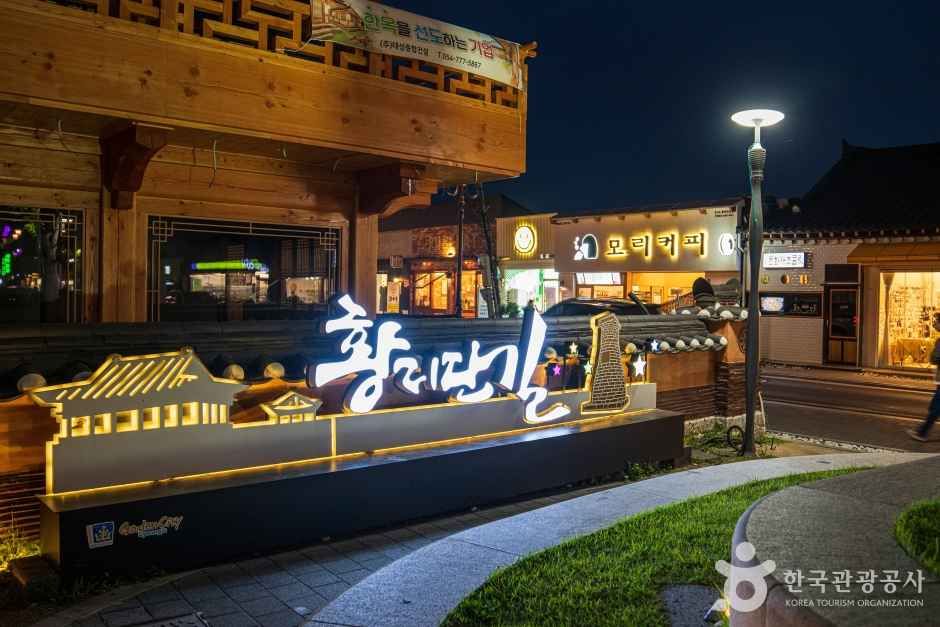
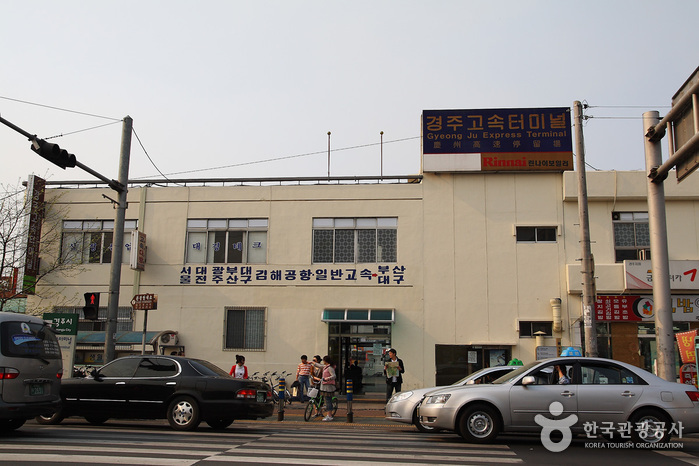
![Zones historiques de Gyeongju [Patrimoine mondial de l’UNESCO] (경주역사유적지구)](http://tong.visitkorea.or.kr/cms/resource/83/202783_image2_1.jpg)
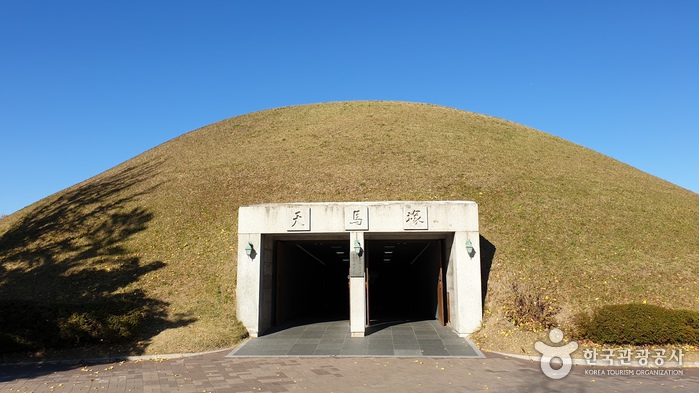
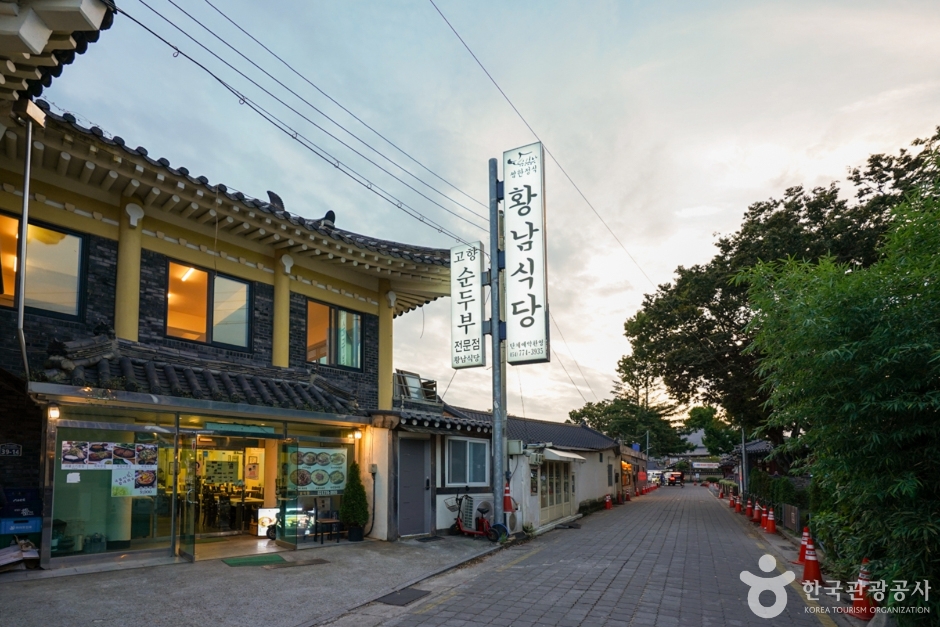
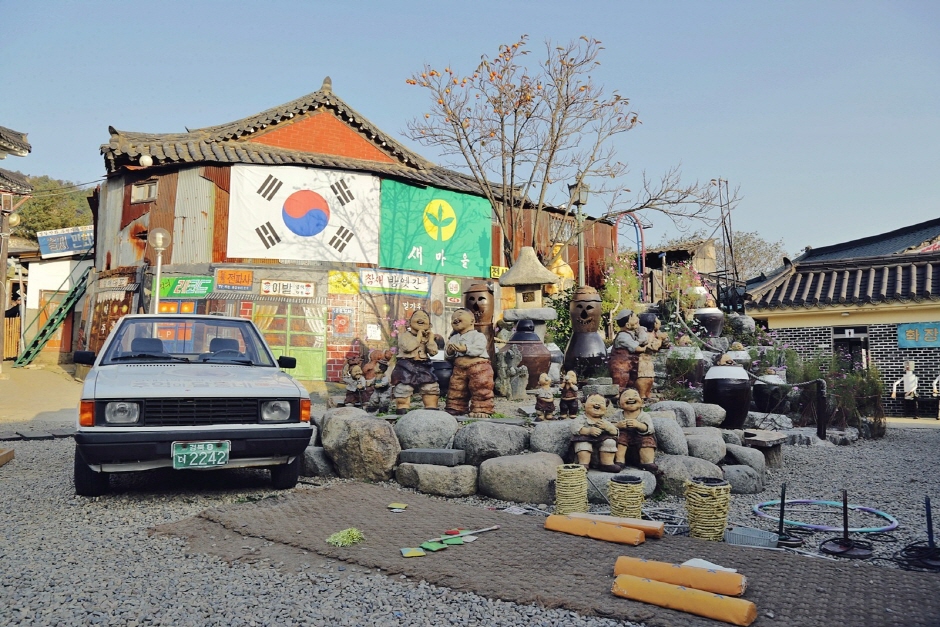
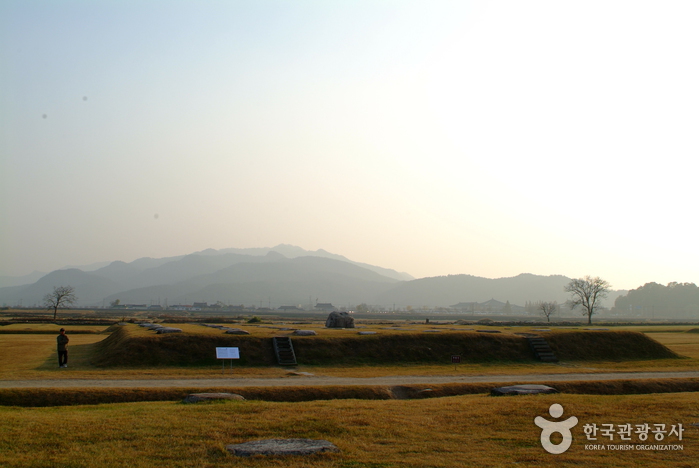
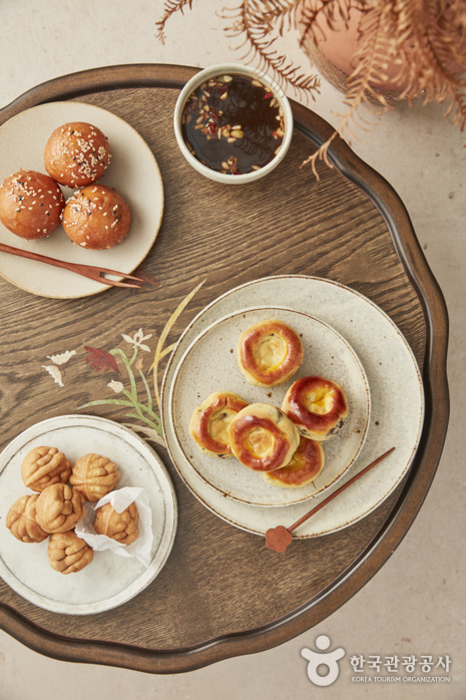
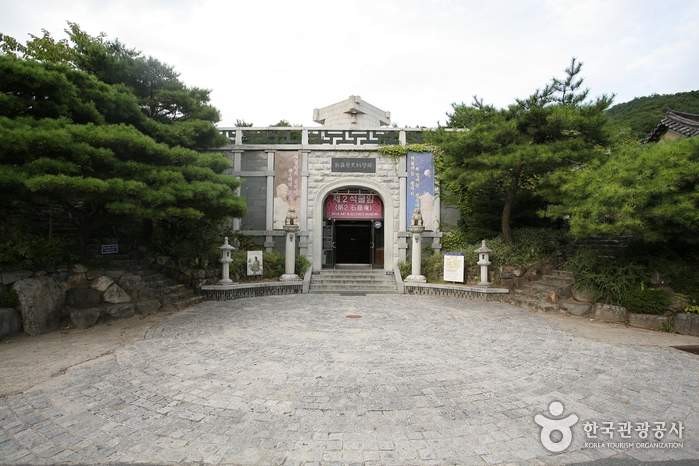
 Français
Français
 한국어
한국어 English
English 日本語
日本語 中文(简体)
中文(简体) Deutsch
Deutsch Español
Español Русский
Русский